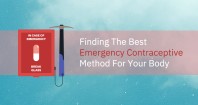
Chemical or Pollutant Exposure at Work
Long-term exposure to chemicals and pollutants, usually in the workplace, is another common cause of COPD. Specks of dust, fumes, vapors, gas, ammonia, exhaust, and chemicals are all irritants of concern.
In one report, the highest COPD prevalence of nonsmokers included those who work in the mining industry. Coal mine dust is one irritant with a link with COPD. Another higher prevalence of COPD is in office and administrative workers, protective service workers, and information industry workers, who are often exposed to dust, gases, paper dust and fumes from copy machines, inks, paints, glues, and solvents.
If you work with any kind of potential irritant, consider your safety and speak to your employer about measures to prevent inhalation.
Secondhand Smoke
Even if you do not smoke actively, secondhand smoke can increase the risk of COPD, especially if you are someone with reduced lung function or other vulnerabilities. For example, the combination of asthma and regular secondhand smoke exposure increases the risk of COPD.
Adults who had long-term exposure to secondhand smoke as children are at a higher risk for early death from COPD, with about seven additional deaths per year for every 100,000 non-smoking adults. Findings also suggest that adults who lived with a smoker during childhood may be at a higher risk for non-fatal COPD. The same study additionally found that adults exposed to secondhand smoke 10 or more hours a week have a 42 percent higher risk of dying from COPD.
While we cannot control every environment in which we are in, it’s important to avoid secondhand smoke as much as possible.
Living Conditions
In poorly ventilated homes, people who burn biomass fuels for cooking, lighting, and heating, can develop COPD. This is especially prevalent in developing countries.
Up to half of the world’s population burns biomass fuel, which is wood, crop residues, animal dung, and coal. This often impacts women and children the most, as they experience the primary exposure to household air pollutants. In the review of studies linked above, researchers found a consistent association between biomass burning and respiratory symptoms and an association between burning biomass fuel and the development of COPD. Additionally, homes with simple ventilation methods have a lower incidence of people contracting COPD.
While burning biomass is less of a concern in America, it is valuable to know that COPD, on a global scale, may in fact have more to do with environmental exposures than smoking.
AAT Deficiency
A genetic condition, alpha-1-antitrypsin (AAT) deficiency, is another rare cause of COPD. It occurs in about one percent of people with COPD. The AAT protein protects the lungs. When a person is deficient in AAT, they can rapidly and prematurely lose lung function thanks to this genetic predisposition. Anyone with a sibling who has AAT deficiency should be tested for the same.
People identified with an AAT deficiency should be monitored regularly for the development of COPD. Avoiding alcohol, exercising regularly, controlling weight and receiving flu and pneumonia vaccines are methods to protect against lung problems. Some people can be treated with replacement AAT protein. Of course, anyone with AAT deficiency who smokes should quit. Anyone diagnosed with COPD may also wish to be tested for the AAT deficiency, especially if they are younger than average or do not have any other recognized risk factors. With AAT deficiency, symptoms appear between tea gas of 30 to 40 years, and earlier if the person with AAT deficiency happens to be a smoker.
Options for Treating COPD
Knowing what causes COPD in a non-smoker can help you understand your specific risk factors for developing this disease and the ways it can be prevented even if you do not smoke. It is equally important to understand how COPD is treated in the event that you do become someone with COPD owing to these risk factors or another cause.
Avoiding any kind of lung irritant, be it tobacco smoke, secondhand tobacco smoke, or occupational exposures, is critical not just as a preventative measure but also after a COPD diagnosis. Any kind of harmful exposure can make COPD symptoms worse, so avoiding these substances is essential to managing COPD regardless of its cause.
As with patients who have AAT deficiency, regular vaccines for influenza and pneumococcal vaccines can help manage lung disease, reducing the risk of coming down with an illness that can further impact lung function.
Medical therapies like supplemental oxygen can help people with COPD who are having a hard time breathing. Pulmonary rehabilitation is an option for some. In extremely severe cases, lung transplants can be an option.
Medications for COPD usually help to widen airways by relaxing the muscles so it is easier to breathe. They can also help by clearing mucus in the lungs. Inhaled bronchodilators are usually taken through an inhaler or nebulizer. They work for about four to six hours if they are short-acting, and are used on an as-needed basis. Ongoing symptoms can be controlled through long-acting bronchodilators used every day, which lasts for about 12 hours.
Glucocorticosteroids work to additionally reduce inflammation in the airways, improving breathing. These are either inhaled or available in a pill form. Often, long-acting inhalers include a corticosteroid to keep the airways widened.
Phosphodiesterase-4 inhibitors are a pill form medication that also reduces inflammation and relaxes the airways, typically used in severe COPD. Theophylline is another pill medication for COPD, helping with chest tightness and shortness of breath. Because it comes with a greater risk of side effects it is not as commonly used as other COPD medications.
As people with COPD are more likely to experience respiratory infections, antibiotics and antivirals are used as needed, based on the advice of a healthcare professional.
All of these medications can certainly add up to a lot of money. Our service ensures that you get safe, quality medications, without the high price tag associated with many other pharmacies. You can rely on us to help you find the prescription medications you need to treat COPD and other conditions. Contact us for more information.







